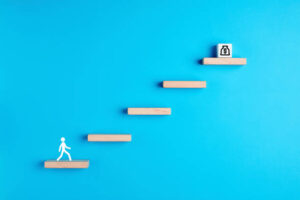The rental industry has witnessed a significant transformation over the past few years. A rental marketplace is an online platform that connects property owners or landlords with potential tenants, streamlining the rental process and making it more efficient and user-friendly. If you are looking to venture into the world of real estate and technology, building a rental marketplace can be a lucrative and rewarding endeavor. In this article, we’ll guide you through the essential steps of creating a successful property rental platform.
1. Market Research

Before diving into the development process, thorough market research is essential. Understand the current rental market trends and the needs of both landlords and tenants. Analyze your target audience, identify potential competitors, and gather valuable insights to help shape your platform’s unique selling points.
2. Define Your Platform’s Scope and Features

Once you have a clear understanding of the market demands, define the scope and features of your rental marketplace. Determine whether you want to cater to a specific niche or offer a broader range of rental properties. Essential features to consider include property listings with detailed descriptions and high-quality images, tenant background checks, secure payment processing, messaging functionality, review, and rating systems, and support for legal documentation.
3. Choose the Right Business Model

Selecting the right business model is crucial for your rental marketplace’s success. Some common approaches include charging landlords a listing fee, taking a commission on successful rentals, or offering premium memberships with additional benefits. Consider the pros and cons of each model and how it aligns with your platform’s objectives.
4. User-Friendly Website and Mobile App Development

The success of your rental marketplace heavily depends on user experience. Develop a user-friendly, responsive website and consider building a mobile app to cater to the growing number of mobile users. Ensure the platform is intuitive, visually appealing, and easily navigable for both landlords and tenants.
5. Focus on Marketing and Customer Acquisition
Launching a rental marketplace is just the beginning; attracting users is the next big challenge. Utilize digital marketing strategies like social media advertising, search engine optimization (SEO), content marketing, and email campaigns to reach your target audience. Partner with real estate agencies and property management companies to expand your reach.
6. Provide Excellent Customer Support

Responsive customer support is vital for ensuring the satisfaction of both landlords and tenants. Offer multiple communication channels such as live chat, email, and phone support to address their concerns promptly. A positive customer experience will encourage repeat business and generate positive word-of-mouth referrals.
7. Scale Gradually and Continuously Improve

As your rental marketplace gains traction, focus on continuous improvement. Gather feedback from users to identify pain points and areas for enhancement. Gradually scale your platform to accommodate a growing user base and incorporate new features to stay ahead of the competition.
Conclusion
Building a marketplace for property rentals can be a rewarding venture with immense potential for growth. By conducting thorough market research, developing user-friendly platforms, implementing strong security measures, and prioritizing customer satisfaction, you can create a successful rental marketplace that connects landlords with tenants seamlessly. Keep an eye on market trends, and continuously innovate to remain relevant and competitive in this dynamic industry.
About Author
Shikha Taman
Shikha Taman is the founder & CEO of SynergyWorks Solutions. With over 12 years of experience in the industry. She has extensive knowledge of software engineering, project management, client management, and business strategy. She strives to ensure all the products developed are always up-to-date with materializing technologies to remain competitive in today’s marketplace.




